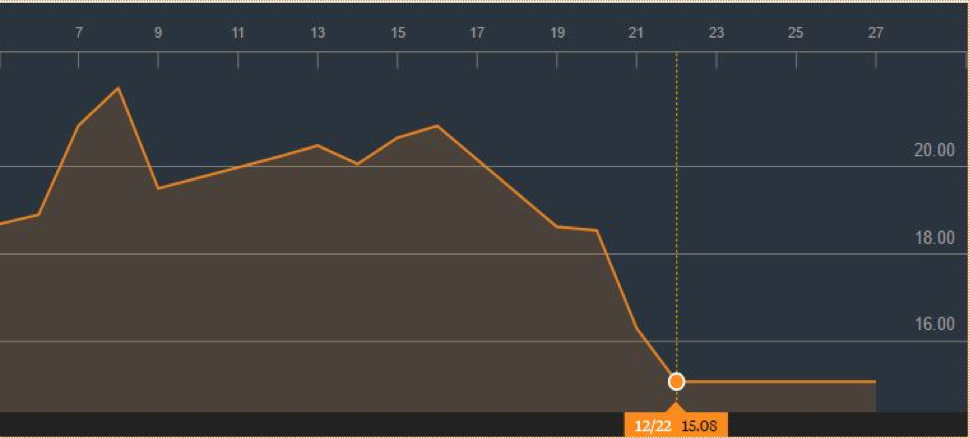Sometimes old habits never die. This is probably the case of the numerous bail-outs the Italian government has performed so far. Indeed, in the last month the hypothetical scenario of Monte dei Paschi state bail-out turned real. In the last week of December, trading in MPS’s financial securities was suspended after Italy’s third-largest lender confirmed it would request “extraordinary and temporary financial support” from the government, which gave its backing for the aid.
Meanwhile, at an emergency meeting in Rome, the Italian cabinet led by prime minister Paolo Gentiloni backed a decree that would allow MPS to benefit from liquidity guarantees and a capital injection. Confirmations of the MPS bail-out came also from the words of the Italian finance minister Carlo Padoan who stated that the injection of liquidity in MPS will allow the bank to pursue its industrial plan and return to operate in support of the Italian economy.
However, the so-called “precautionary recapitalisation”, which applies to banks which are still solvent but require capital to meet regulatory standards in the event of a deep recession, will anyway trigger losses also on MP’s junior bondholders making them share some of the financial burden. The scheme involves a much less drastic hit to investors in the bank than is the case under EU rules if a bank goes into resolution, when even depositors over €100,000 can be “bailed in”. Junior bondholders, indeed, under the scheme drawn by the government will receive senior debt of the same value as their subordinated bonds, while small savers will be protected, as confirmed also by Mr. Padoan. The request for a bail-out came from MPS’s failure to raise enough funds in its last-ditch attempt to bring in private capital. The Siena-based bank, which has been overwhelmed by non-performing loans, said it had raised €2.5bn in private funds from retail and institutional investors, well below the €5bn in capital that it needed following its failure in a European-wide banking stress test over the summer.
Therefore, the funds needed to rescue MPS will come from a €20bn bank bailout package that was approved by the Italian parliament. Mr Padoan did not specify how much money of that package would be used for MPS; he simply stated that the whole package will be enough to meet the requirements identified by the stress test and to help other Italian suffering banks. Thanks to the intervention, Italian officials hope to put an end to MPS’s trouble and restore confidence in other financial institutions as well.
However, problems are not over for Italy. Indeed, one of the big concerns associated with Italy’s banking rescue is that it will worsen the country’s fiscal outlook at a time when it already has one of the highest ratios of debt to gross domestic product in Europe, at 133 per cent. If we assume that all the package is used in the new year, that would amount to about 1.2% of GDP, making almost impossible for Italy to meet its efforts on managing its debt under EU budget rules. Moreover, last week not only the European Central Bank said MPS’s capital shortfall has risen from 5bn to 8.8bn, thus significantly increasing the sum for the rescue of the Italian bank and leaving less money in case of interventions to help other underperforming banks, but also MPS stated that the ECB had warned the bank’s liquidity had suffered a “rapid deterioration” over the past month, as it strived to find enough cash from private investors to avoid a state bailout. Indeed, between November 30 and December 21, net liquidity at one month declined from €12.1bn, or 7.6 per cent of its activities, to €7.7bn, or 4.8 per cent of its activities
Therefore, new questions are now open: How will Berlin respond to this situation? Will this rescue be the real last bailout performed by the Italian Government? Why not merging 2 or 3 financial institutions to come up with a solid one?
Emanuele Fabbri
